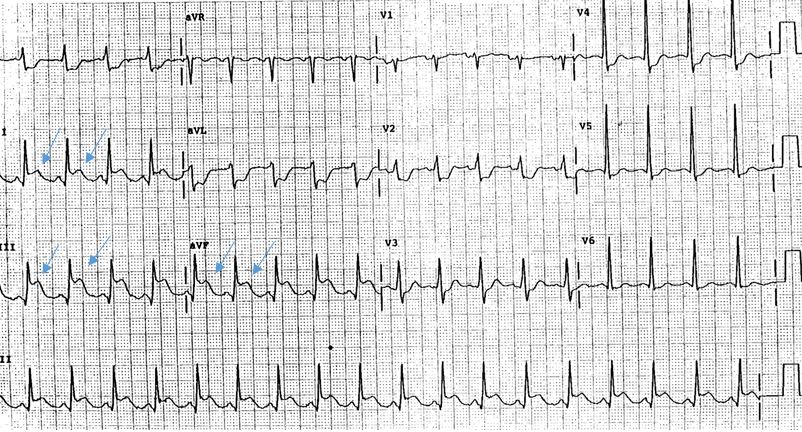Published on

Differential Diagnosis
- Sinus tachycardia
- Supraventricular tachycardia
- Inferior STEMI
- Sinus bradycardia
- Ventricular tachycardia
Diagnosis
The ECG shows an inferior STEMI (answer C). There is ST elevation in the inferior ECG leads (II, III, aVF), with reciprocal changes consistent with an inferior STEMI.
Learnings
- Symptoms predictive of myocardial ischemia or infarction include:
- Chest discomfort with exertion
- Diaphoresis
- Radiation
- Vomiting
- Demographic groups where ischemic may present atypically include diabetics, the elderly, and women
- Inferior MIs may present as epigastric pain, and not chest pain
- Inferior STEMIs are typically due to an occlusion in the right coronary artery (RCA) and may affect the right ventricle, resulting in hypotension
Pearls for Initial Management and Considerations for Transfer
- An acute STEMI requires emergent transport to a center that can provide interventional catheterization services
- Place two IV lines, consider oxygen if hypoxemic, and place on a cardiac monitor while awaiting transport
- Have patient chew an aspirin while awaiting transport
- If patient is hypotensive, give IV fluids. Extreme caution should be used with sublingual nitroglycerin
A 42-Year-Old Woman with Short-Term Dizziness and Vomiting
1 2
